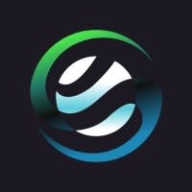

Cortex XDR by Palo Alto Networks and Morphisec are two prominent cybersecurity solutions. Cortex XDR seems to have the upper hand due to its broader feature set and integration capabilities, although Morphisec stands out for its lightweight approach and advanced protection techniques.
Features: Cortex XDR is valued for its comprehensive visibility, advanced threat detection, and integration capabilities. Morphisec is noted for its unique Moving Target Defense technology along with its lightweight yet powerful protection, and innovative defense mechanisms.
Room for Improvement: Users suggest Cortex XDR could enhance endpoint detection speed, fine-tune analytics accuracy, and performance tweaks. Morphisec users recommend improving scalability, providing deeper reporting tools, and better scalability.
Ease of Deployment and Customer Service: Cortex XDR users report a straightforward deployment process but mention the need for improved customer service. Morphisec enjoys a reputation for quick deployment and responsive support.
Pricing and ROI: Cortex XDR has higher initial setup costs but users report good ROI as it integrates multiple security layers. Morphisec has lower setup costs and offers substantial ROI due to its innovative defense mechanisms.
| Product | Market Share (%) |
|---|---|
| Cortex XDR by Palo Alto Networks | 3.7% |
| Morphisec | 0.5% |
| Other | 95.8% |


| Company Size | Count |
|---|---|
| Small Business | 41 |
| Midsize Enterprise | 18 |
| Large Enterprise | 36 |
| Company Size | Count |
|---|---|
| Small Business | 5 |
| Midsize Enterprise | 8 |
| Large Enterprise | 8 |
Cortex XDR by Palo Alto Networks delivers comprehensive endpoint security, integrating well with other systems to offer robust threat detection and real-time protection through AI-driven analytics.
Cortex XDR by Palo Alto Networks offers advanced endpoint protection and threat detection through AI and behavior-based analytics. Its user-friendly design simplifies integration with firewalls, delivering multi-layered protection with low resource consumption. Valued for policy management, USB control, and incident correlation, Cortex XDR enhances threat management and real-time threat hunting capabilities. However, users note challenges with third-party integration, reporting, and dashboard automation. Agent performance across operating systems and memory consumption are areas for improvement, alongside reducing false positives and simplifying endpoint management and setup.
What features does Cortex XDR offer?
What benefits should be considered in reviews?
Cortex XDR is crucial in industries requiring robust endpoint protection, such as finance, healthcare, and technology. It supports malware detection, behavioral analysis, and ransomware mitigation across endpoints, including remote work environments, providing comprehensive threat visibility and security policy management. The solution's integration with firewalls and specialized industry requirements enhances security posture in diverse operational settings.
Morphisec integrates seamlessly with platforms like Microsoft Defender, offering signatureless protection against zero-day threats and ransomware. It enhances existing endpoint solutions with minimal maintenance through its set-and-forget deployment, providing heightened security and reduced false positives.
Morphisec strengthens defense strategies by merging memory morphing and signatureless protection to effectively block zero-day attacks and ransomware. It operates efficiently within existing infrastructure, reducing system impact and maintenance needs. Users find its full visibility dashboard invaluable. Despite its strengths, cloud deployment and reporting features can be improved. Stability, alerts, and integration with other systems pose challenges for users, impacting usability and support quality.
What are Morphisec's key features?
What benefits should users consider in reviews?
In security-focused industries, Morphisec is crucial for protecting workstations and servers against sophisticated attacks like ransomware. Its signatureless technology offers early threat detection, while compatibility with existing systems ensures seamless integration, providing advanced protection without additional licensing costs.
We monitor all Endpoint Protection Platform (EPP) reviews to prevent fraudulent reviews and keep review quality high. We do not post reviews by company employees or direct competitors. We validate each review for authenticity via cross-reference with LinkedIn, and personal follow-up with the reviewer when necessary.